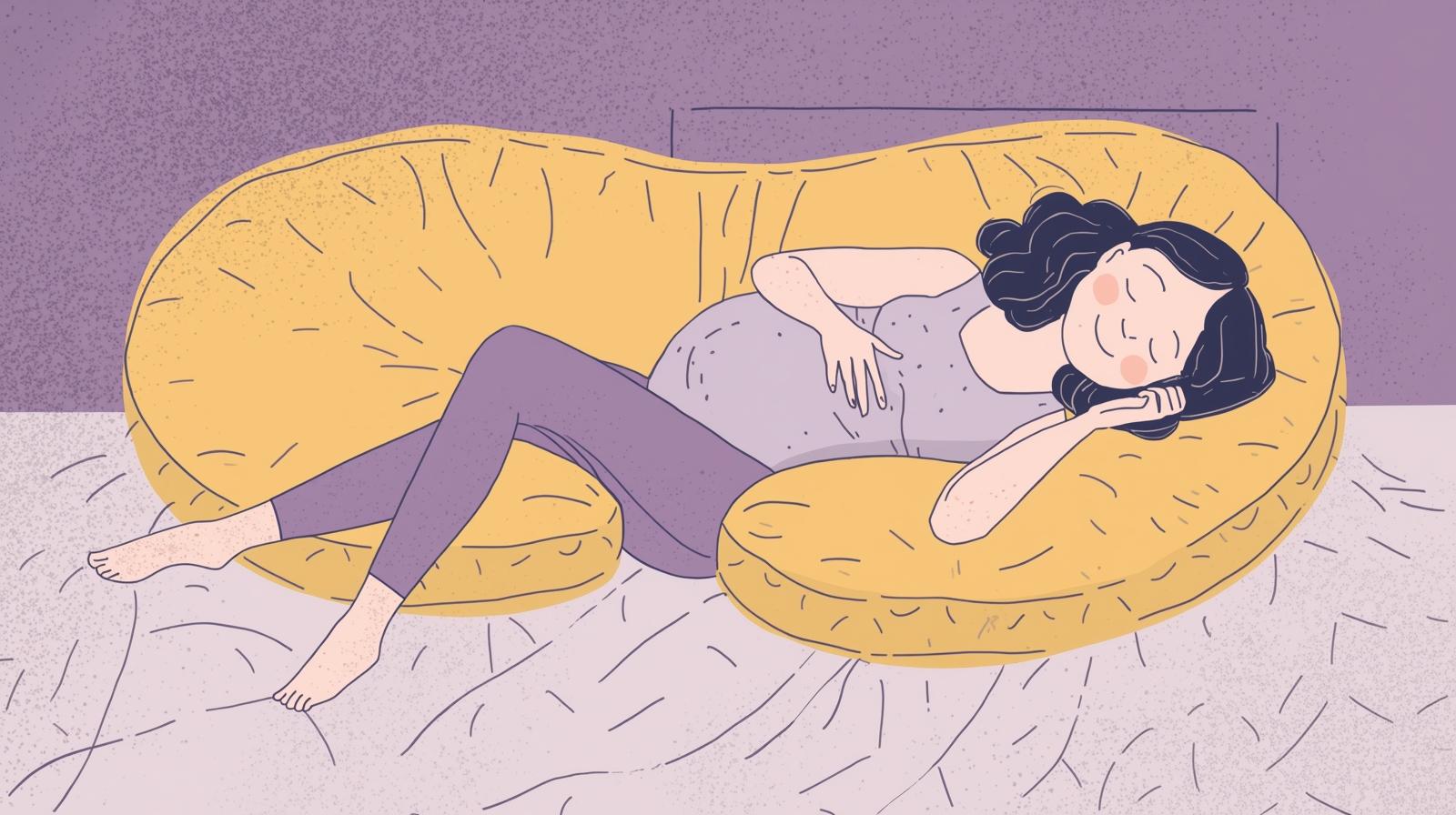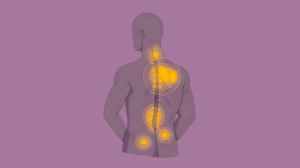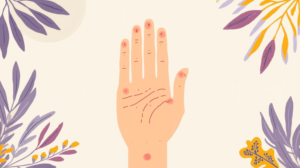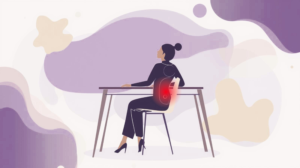The physical and hormonal transformations that the body experiences during pregnancy are both painful and joyous. Most pregnant women complain about difficulty in sleeping due to hip discomfort, back pain, heartburn, or inability to find a comfortable position
Pregnancy pillows are designed to accommodate the back, hips, legs, and stomach as opposed to ordinary pillows. This assists the pregnant women to sleep and have less pain. They also encourage safe side sleeping that according to experts is the best way to sleep since it helps in enhancing blood flow in the babies. Along with sleeping aid, these pillows are also useful in terms of relaxation, relieving stress, as well as the post-partum recovery.
This article describes the main advantages of pregnancy pillows, the various types of pillows available, their uses, and instances in which a doctor might be required to ensure that the expected mother can live in a better and comfortable manner.
Challenges of Sleeping During Pregnancy
Physical Changes Affecting Sleep
- Weight gain & shifted gravity: causes spinal strain and back pain.
- Expanding uterus: presses on diaphragm and bladder, leading to breathing issues and frequent urination [2].
- Hormonal changes: loosen joints, reducing stability and cause hip discomfort.
- Result: frequent tossing and turning, poor rest.
Common Sleep Problems
- Insomnia: affects nearly half of pregnant women.
- Restless Legs Syndrome (RLS): urge to move legs, linked to iron deficiency.
- Breathing issues: shortness of breath, snoring, possible sleep apnea.
- Positioning challenges: stomach and back sleeping unsafe; side-sleeping strains hips/shoulders without support.
- Solution: pregnancy pillows (U-shaped, C-shaped) provide support for spine, belly, and hips [3].
Health Risks of Poor Sleep
- Maternal fatigue: lowers energy, focus, and increases accident risk.
- Hypertension & preeclampsia: poor sleep linked to high blood pressure.
- Gestational diabetes: disrupted sleep and affects blood sugar control [4].
- Fetal development concerns: reduced oxygen/nutrient supply.
- Mental health impact: higher risk of prenatal depression and anxiety.
Role of Pregnancy Pillows
- Promote better posture during side sleeping.
- Reduce discomfort-related awakenings.
- Help improve sleep quality and indirectly lower pregnancy risks.
Pregnancy Pillow Benefits: An Overview
Improved Sleep Quality
- Helps maintain side-sleeping (especially left side) for better blood flow.
- Reduces tossing and turning; deeper, more refreshing sleep.
- Supports hormonal balance, immunity, and emotional health [5].
Reduced Back and Hip Pain
- Between-knee support keeps hips aligned.
- Lumbar cushioning eases lower back strain.
- Full-body support distributes weight evenly; less stiffness.
Better Blood Circulation
- Prevents compression of the vena cava.
- Enhances blood flow to placenta and baby.
- Reduces swelling, dizziness, and fainting risk.
Support for Belly and Pelvic Region
- Cradles the belly; prevents muscle strain.
- Stabilizes the pelvis and relieves ligament pressure.
- Helpful for twin pregnancies or pelvic pain conditions.
Relief from Swelling and Leg Cramps
- Leg elevation reduces edema and fluid retention.
- Improves circulation in legs and feet.
- Minimizes nighttime leg cramps.
Emotional Benefits
- Provides a sense of comfort and security.
- Reduces stress and improves mood.
- Supports mental well-being in later stages of pregnancy.
Types of Pregnancy Pillows and Their Benefits
Full-Body Pillows
- Long cushions from head to toe.
- Support for belly, back, and legs.
- Reduce tossing and turning.
- Great for side sleepers and those who like hugging pillows.
C-Shaped Pillows
- Curved like a “C”.
- Support for back, belly, hips, and legs.
- Keeps the body aligned for side sleeping.
- Easy to shift positions without adjusting pillows.
U-Shaped Pillows
- Wrap around front and back.
- Support for abdomen + spine.
- Best for restless sleepers or severe back pain.
- Provide all-around comfort but take up more space.
Wedge Pillows
- Small, triangular cushions.
- Compact, affordable, and portable.
- Can be placed under the belly, back, or upper body.
- Useful for reducing heartburn and reflux.
Inflatable Pillows
- Adjustable firmness, easy to deflate/carry.
- Light and portable; good for travel.
- Can support the belly or back depending on need.
How Pregnancy Pillows Promote Healthy Sleep Posture?
Pregnancy pillows are more than just comfort aids; they actively promote healthier and safer sleep postures that reduce strain and support maternal-fetal health. Poor posture during pregnancy not only increases physical discomfort but can also negatively affect circulation and organ function [6]. Here’s how pregnancy pillows help correct and maintain healthy posture during sleep.
Importance of Side Sleeping (Especially the Left Side)
Medical professionals often recommend side sleeping, specifically on the left side, during pregnancy. This position helps maximize blood flow to the placenta, improves kidney function, and reduces swelling in the legs and feet.
However, maintaining this position throughout the night can be difficult without support. Pregnancy pillows, especially C-shaped and U-shaped designs, encourage left-side sleeping by preventing the body from rolling backward or forward. They also cushion the belly, making sleeping far more comfortable.
Key benefits of left-side sleeping with pillow support:
- Better oxygen supply to the baby by reducing vena cava compression.
- Reduced swelling and water retention due to improved circulation.
- Less strain on the back as the pillow absorbs some of the body’s weight.
Alignment of Spine and Hips
One of the biggest challenges pregnant women face is spinal misalignment caused by uneven weight distribution. Without proper support, the hips can tilt, causing back pain and stiffness in the morning.
Pregnancy pillows prevent this by aligning the spine and hips:
- Placing a pillow between the knees keeps the hips parallel.
- Supporting the belly prevents forward tilt and strain.
- Resting the back against the pillow reduces pressure on the lumbar spine [7].
This alignment helps reduce stress on ligaments and joints while also preventing sciatica symptoms, which are often caused by nerve compression due to poor posture.
Support for Head and Neck
In addition to supporting the lower body, pregnancy pillows also help stabilize the head and neck. Maintaining neutral alignment of the cervical spine is important to reduce headaches, neck strain, and acid reflux.
U-shaped and full-body pillows provide cushioning for the head while also supporting the torso, preventing the head from dropping into awkward angles during sleep. This is particularly useful for women who suffer from snoring, sleep apnea, or pregnancy-related reflux, as proper head elevation can reduce symptoms.
Summary: Pregnancy pillows train the body into maintaining a safe and ergonomically correct sleeping position, which improves rest, reduces strain, and supports fetal health.
Additional Health Benefits of Pregnancy Pillows
Reduced Heartburn & Acid Reflux
- Elevates the upper body to stop acid rising.
- Wedge pillows are most effective.
Relief from Sciatica Pain
- Supports lower back & hips.
- Reduces pressure on the sciatic nerve.
- Encourages proper pelvic alignment.
Stress & Emotional Well-being
- Promotes relaxation and reduces anxiety.
- “Hugging” effect of full-body/U-shaped pillows improves comfort and sleep.
Postpartum Uses
- Nursing support: eases strain on arms/back.
- Helps recovery after delivery or C-section.
- Useful for continued sleep posture correction.
Reduction of Restless Legs Syndrome (RLS)
- Improves blood flow by elevating legs.
- Reduces RLS symptoms for deeper sleep.
Support in Multiple Pregnancy
- Provides extra support for twins/multiples.
- Distributes weight evenly, reduces muscle fatigue.
How to Choose the Right Pregnancy Pillow?
Body Type & Sleeping Habits
- Taller women: longer U- or full-body pillows.
- Shorter women: wedge or C-shaped pillows.
- Side sleepers: C-shaped for natural contour.
- Combination sleepers: U-shaped for all-around support.
- Tip: Pick a pillow that matches your usual sleep style.
Material & Filling
- Memory foam: firm, body-contouring, but traps heat.
- Microbeads: lightweight, breathable, flexible.
- Polyester fiberfill: soft, cheap, but flattens.
- Cotton: breathable, hypoallergenic.
- Tip: Allergy-prone moms: choose cotton or microbeads.
Size & Portability
- Large (U-/C-shaped): full support, but take up bed space.
- Small (wedge/inflatable): compact, portable, good for travel.
- Tip: Small spaces or frequent travel: wedge or inflatable.
Budget
- Budget: wedge or small C-shape.
- Mid-range: full-body pillows.
- Premium: U-shaped with memory foam/custom designs.
- Tip: For postpartum use, invest in a durable, high-quality option.
Medical Needs
- Back/pelvic pain: U-shaped.
- Acid reflux: wedge.
- Sciatica: C-shape or wedge.
- Tip: Consult a doctor for specific conditions.
Tips for Using a Pregnancy Pillow Effectively
Simply owning a pregnancy pillow isn’t enough; using it correctly ensures you maximize its benefits. Proper positioning and care can make the difference between discomfort and restorative sleep.
Proper Positioning
Pregnancy pillows can be placed in different ways depending on the need:
- Between the knees: Keeps hips aligned and reduces strain on the pelvis.
- Under the belly: Prevents abdominal muscles from overstretching.
- Behind the back: Provides lumbar support and stops rolling onto the back during sleep.
- Under the head and shoulders: Elevates the upper body to reduce reflux or snoring.
Tip: Try different positions until you find the one that supports your body best.
Combining with Mattress Support
Even the best pregnancy pillow won’t help if the mattress is unsupportive. A firm or medium-firm mattress provides a solid foundation for the pillow to work effectively. If the mattress is too soft, the pillow may sink, reducing its ergonomic benefits.
Tip: Consider adding a mattress topper for extra firmness if your mattress is old or sagging.
Cleaning and Maintenance
Pregnancy pillows are used nightly, so keeping them clean is crucial for hygiene and durability.
- Look for pillows with removable, machine-washable covers.
- Spot clean the inner filling if needed, depending on the material.
- Replace the pillow if it loses firmness or shape over time.
Tip: Wash covers every 1–2 weeks to avoid dust and allergens.
Experimenting with Positions
No two pregnancies are alike, and comfort needs may change as pregnancy progresses. Don’t hesitate to experiment with pillow placement.
- In early pregnancy: A wedge pillow under the belly may be enough.
- In mid-pregnancy: A C-shaped pillow helps balance belly and back support.
- In late pregnancy: A U-shaped pillow provides the all-around comfort necessary for heavy abdominal support [8].
Some women even use pregnancy pillows while sitting on the couch or working in bed, placing them behind the back for lumbar support or under the legs to improve circulation.
Common Myths About Pregnancy Pillows
Despite their growing popularity, many misconceptions surround pregnancy pillows. Some women avoid using them due to misinformation, while others underestimate their importance. Let’s break down the most common myths:
“Any pillow can replace a pregnancy pillow”
Myth: Regular bed pillows can provide the same support as a pregnancy pillow.
Reality: Standard pillows are not designed with the ergonomic needs of pregnant women in mind. They are usually too short, too soft, or lack the proper curvature to support the spine, hips, and belly simultaneously.
Pregnancy pillows are engineered to:
- Align the spine and hips.
- Reduce belly strain.
- Prevent rolling onto the back.
Regular pillows may provide partial comfort but often require stacking multiple pillows, which shift during the night, causing restlessness.
“Pregnancy pillows are only for late pregnancy”
Myth: You only need a pregnancy pillow in the third trimester.
Reality: Many women start experiencing sleep problems, hip pain, or acid reflux in the first or second trimester.
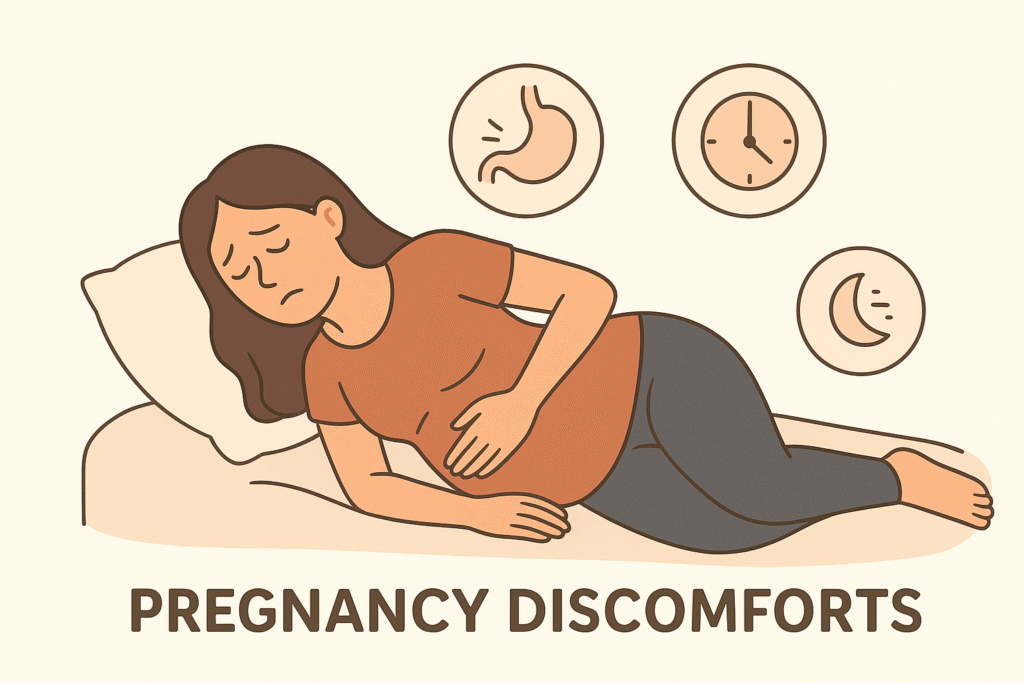
Early use of a pregnancy pillow can prevent worsening discomfort and promote better rest throughout pregnancy.
Even in early months, wedge or smaller C-shaped pillows can provide much-needed lumbar or belly support.
“They are unnecessary luxuries”
Myth: Pregnancy pillows are just expensive, optional accessories.
Reality: Poor sleep during pregnancy increases risks of gestational diabetes, hypertension, anxiety, and depression. A pregnancy pillow is not simply a luxury; it is a health tool that supports both mother and baby.
Additionally, many pregnancy pillows serve multiple functions:
- During pregnancy: Support for sleep, sitting, and lounging.
- Postpartum: Nursing aid, back support, or recovery cushion.
This makes them a long-term investment in comfort and health.
“Pregnancy pillows cause dependency”
Myth: Using a pregnancy pillow will make it hard to sleep without one later.
Reality: Pregnancy pillows address temporary physiological changes; like a growing belly, shifting center of gravity, and joint strain. After delivery, many women naturally return to normal sleep habits.
In fact, postpartum, women often repurpose these pillows for breastfeeding or lumbar support, proving their versatility rather than dependency.
When to Seek Medical Advice?
While pregnancy pillows offer remarkable relief, they are not a cure for all sleep-related or physical discomforts. It’s important to recognize when symptoms require medical attention.
Signs of Serious Sleep-Related Problems
- Persistent insomnia: If sleep disturbances continue despite pillow use, this could indicate stress, anxiety, or medical issues like sleep apnea.
- Severe back or pelvic pain: Continuous or worsening pain may point to conditions such as sciatica, pelvic girdle pain, or herniated discs.
- Excessive swelling (edema): Mild swelling is common, but sudden or severe swelling in the hands, feet, or face may signal preeclampsia, which requires urgent care.
- Breathing difficulties: Shortness of breath at rest or while lying down can indicate respiratory or circulatory issues that pillows alone cannot resolve.
Role of Healthcare Providers
Healthcare professionals provide personalized recommendations that ensure safety and comfort:
- Obstetricians and gynecologists: Advise on safe sleeping positions, monitor pregnancy progress, and address conditions such as hypertension or gestational diabetes.
- Physiotherapists: Suggest exercises, stretches, and supportive pillows to reduce musculoskeletal pain.
- Chiropractors: May recommend alignment strategies and suitable ergonomic pillows for back support.
- Sleep specialists: Help diagnose and treat sleep disorders, ensuring better rest during pregnancy.
Why Consulting a Doctor Matters?
Ignoring symptoms and relying only on pillows may lead to long-term complications. A medical consultation ensures:
- Accurate diagnosis: Imaging tests or physical exams reveal the real cause of discomfort.
- Safe rehabilitation: Doctors guide you in combining pillow use with therapeutic exercises.
- Prevention of complications: Early detection of problems such as gestational hypertension or preeclampsia prevents severe outcomes for both mother and baby.
Conclusion
In the course of pregnancy, your body and your mood undergo numerous changes and many of these changes influence the quality and comfort of your sleeping experience. A pregnant pillow does not only make the body more comfortable but also provides relief to the pressure points, makes the body to align itself naturally and improves the quality of sleep of the mother and the unborn child.
The benefits extend beyond sleep, including:
- Relief from back, hip, and pelvic pain.
- Enhanced blood circulation and oxygen flow.
- Reduction in heartburn, reflux, and swelling.
- Emotional well-being through improved rest.
- Postpartum uses, including nursing and recovery support.
The type of your body, whether you like to sleep lying on your back, or on your side are the determinant factors of which pillow fits you the best (like U-shaped, C-shaped, wedge, or full-body pillow). Although the pillows are very comfortable, it is worthy to remember that the pillows are merely the support tools and not the medical intervention. To manage pregnancy safely, visit a doctor, in case the pain does not disappear or you start experiencing unusual symptoms.
Do you know back pain may also happen during pregnancy? To control it to a certain level, follow these articles, it might help you:
- Compression Belt for Back Pain
- Posture and Ergonomics for Pain Relief
- Coccyx Cushion Tailbone and Hip Pain
Frequently Asked Questions:
1. What are the main benefits of using a pregnancy pillow?
They improve sleep quality, reduce back and hip pain, support the belly and pelvis, enhance circulation, and relieve swelling.
2. Which pregnancy pillow shape is best for back pain?
U-shaped and C-shaped pillows are most effective for back pain since they provide support on both sides of the body.
3. When should I start using a pregnancy pillow?
You can begin using one as early as the first trimester for comfort, though most women find them especially helpful from the second trimester onward.
4. Are U-shaped or C-shaped pregnancy pillows better?
U-shaped pillows offer 360° support (ideal for restless sleepers), while C-shaped pillows are more compact and support side sleeping. The choice depends on personal preference and bed space.
5. Can a pregnancy pillow help with sciatica pain?
Yes. Placing the pillow between the knees and under the belly helps align the spine, reducing pressure on the sciatic nerve.
References
- Saxena, A. K., Chilkoti, G. T., Singh, A., & Yadav, G. Pregnancy induced low back pain in Indian women: prevalence, risk factors, and correlation with serum calcium levels. Anesth Essays Res. 2019; 13 (2): 395-402. doi: 10.4103/aer.AER_196_18
- Bordoni, B., Kotha, R., Escher, A. R., & Escher Jr, A. R. (2024). Symptoms arising from the diaphragm muscle: function and dysfunction. Cureus, 16(1). DOI 10.7759/cureus.53143
- Core, B. P., Australia, A. U. D., Austria, E. U. R., Belgium, E. U. R., Kč, C. C., Finland, E. U. R., … & Sweden, S. E. K. Are Body Pillows Good For You?. https://www.thehuggerpillow.com.au/blogs/the-hugger-pillow-blog/are-body-pillows-good-for-you-a-scientific-perspective
- Twedt, R., Bradley, M., Deiseroth, D., Althouse, A., & Facco, F. (2015). Sleep duration and blood glucose control in women with gestational diabetes mellitus. Obstetrics & Gynecology, 126(2), 326-331. DOI: 10.1097/AOG.0000000000000959
- Schwartz, E., & Villa, J. K. (2025). Navigating the Postpartum Period: Hormonal Changes and Essential Care for Women. DOI: 10.5772/intechopen.1008428
- Kember, A. J., Anderson, J. L., Gorazd, N. E., House, S. C., Kerr, K. E., Torres Loza, P. A., … & Goergen, C. J. (2024). Maternal posture-physiology interactions in human pregnancy: a narrative review. Frontiers in Physiology, 15, 1370079. https://doi.org/10.3389/fphys.2024.1370079
- Jacobson, H. (1991). Protecting the back during pregnancy. AAOHN Journal, 39(6), 286-291. https://doi.org/10.1177/216507999103900605
- New York Magazine (2025). The Best Pregnancy Pillows, According to Strategist Moms. Retrieved from: https://nymag.com/strategist/article/best-pregnancy-pillows.html [Viewed on 29 October 2025]
